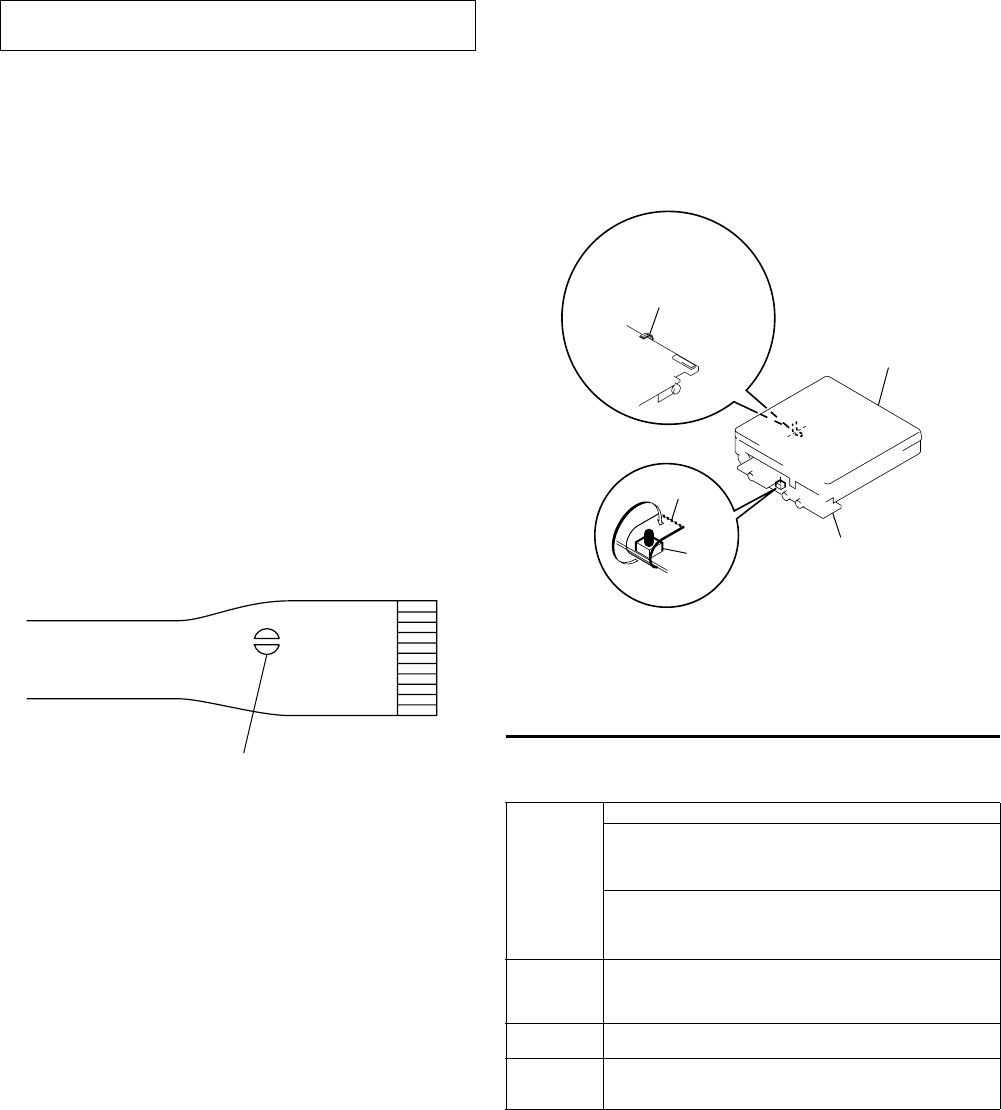
4
MZ-N510CK
NOTES ON HANDLING THE OPTICAL PICK-UP
BLOCK OR BASE UNIT
The laser diode in the optical pick-up block may suffer electro-
static break-down because of the potential difference generated
by the charged electrostatic load, etc. on clothing and the human
body.
During repair, pay attention to electrostatic break-down and also
use the procedure in the printed matter which is included in the
repair parts.
The flexible board is easily damaged and should be handled with
care.
NOTES ON LASER DIODE EMISSION CHECK
Never look into the laser diode emission from right above when
checking it for adjustment. It is feared that you will lose your sight.
NOTES ON HANDLING THE OPTICAL PICK-UP BLOCK
(LCX-5R)
The laser diode in the optical pick-up block may suffer electro-
static break-down easily. When handling it, perform soldering
bridge to the laser-tap on the flexible board. Also perform mea-
sures against electrostatic break-down sufficiently before the op-
eration. The flexible board is easily damaged and should be handled
with care.
OPTICAL PICK-UP FLEXIBLE BOARD
SECTION 1
SERVICING NOTES
laser-tap
• In performing the repair with the power supplied to the set, re-
moving the MAIN board causes the set to be disabled.
In such a case, fix a convex part of the open/close detect switch
(S803 on MAIN board) with a tape in advance.
Handle the FLEXIBLE board (over write head) with care, as it
has been soldered directly to the MAIN board.
In repairing the component side of MAIN board, connect the
FLEXIBLE board (over write head) and the MAIN board with
the lead wires in advance.
upper panel ass
y
MAIN board
tape
S803
FLEXIBLE board
(over write head)
• This set requires the patch data in the nonvolatile memory
(IC852) to be rewritten using the application, when the MAIN
board was replaced. (See page 31)
System requirements
The following hardware and software are required in order to use the SonicStage software
for the Net MD.
This software is not supported by the following environments:
•Macintosh
•Windows XP versions other than Home Edition or Professional
•Windows 2000 versions other than Professional
•Windows 98 versions other than Second Edition
•Windows NT
•Windows 95
•Personally constructed PCs or operating systems
•An environment that is an upgrade of the original manufacturer-installed operating system
•Multi-boot environment
•Multi-monitor environment
Notes
•We do not ensure trouble-free operation on all computers that satisfy the system requirements.
•We do not ensure trouble-free operation of the system suspend, sleep, or hibernation function on all
computers.
Computer IBM PC/AT or Compatible
CPU: Pentium II 400 MHz or higher (Pentium III 450 MHz or higher
is recommended.)
Hard disk drive space
1)
: 120 MB or more
RAM: 64 MB or higher (128 MB or higher is recommended)
Others
CD-ROM drive (capable of digital playback by WDM)
Sound Board
USB port (supports USB 2.0 Full Speed (previously USB 1.1))
Operating
System
Factory installed:
Windows XP Home Edition/Windows XP Professional/Windows
Millennium Edition/Windows 2000 Professional/Windows 98 Second
Edition
Display High Color (16bit) or greater, 800 ⋅ 480 dots or more (800 ⋅ 600 dots
or more is recommended)
Others Internet access: for Web registration and EMD services
Windows Media Player (version 7.0 or higher) installed for playing
WMA files
Note on hard disk drive space
120 MB or more free space on the hard disk drive is required. If your computer does not
have enough space, the software will not be properly installed. The required free space
differs according to the version of your Windows OS, or the amount of audio files that you
handle.
1)


















